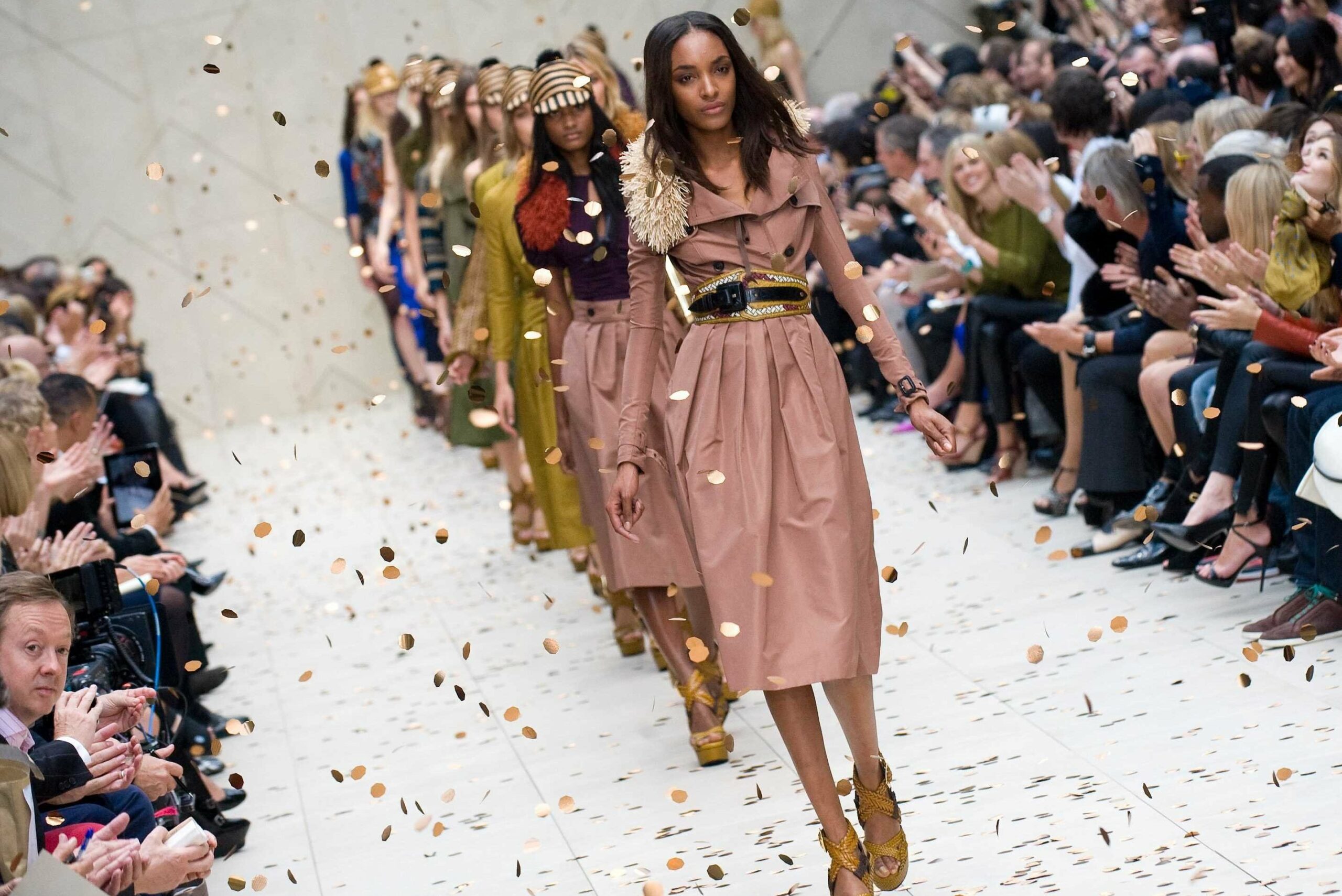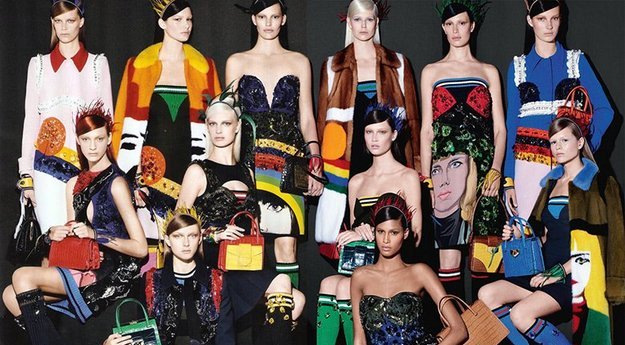2015 will be another challenging year for the luxury goods industry, explains Fflur Roberts, Head of Luxury Goods Research at Euromonitor International.

2015 will be another challenging year for the luxury goods industry, explains Fflur Roberts, Head of Luxury Goods Research at Euromonitor International.
2015 will be another challenging year for the luxury goods industry, explains Fflur Roberts, Head of Luxury Goods Research at Euromonitor International.
Could Michael Kors issue a profit warning in 2015?
2015 will be another challenging year for the luxury goods industry.
In particular, the economic instability, social unrest and armed conflict buffeting formerly fast-growing emerging markets will further drive up the strategic importance of the developed markets.
This will create new risks, but opportunities too. Here are our predictions of the brands, markets and trends that will grab the headlines as the year takes shape.
“ Economic instability & social unrest will buffer formerly fast-growing markets ”
The Movers and Shakers
Mulberry will report its best financial results in more than three years
The company is getting back to what it does best: affordable luxury. This will drive a significant sales uptick in the UK, its core market. We also believe that Emma Hill, the company’s former Creative Director, will be in the running to become its next CEO.
Burberry’s profits will weaken as the value of the British pound strengthens
The company’s fixed costs are in pounds, but its revenue is exposed to a wide range of volatile currencies. If UK interest rates rise in 2015, as is likely, the pound will climb higher still. The resultant squeeze on margins will pressurise Burberry to hike its prices.
There will be a big shareholder change at Hugo Boss
The brand’s shift from a wholesale to a retail model is paying off, but we believe key shareholder Permira is losing patience. This could trigger a high-profile takeover.

Burberry could suffer at the hand of currency fluctuations
Private equity will invest in one or more of the following brands: Salvatore Ferragamo, Brunello Cucinelli, Tod’s, Ermenegildo Zegna, Dolce & Gabbana
The vulture capitalists were quiet in 2014, reflecting uncertainty over the global outlook for luxury goods. We believe they will come back stronger in 2015, despite the tricky operating conditions. Minority, not just majority stakes, will be on their agenda.
Michael Kors will issue a profit warning and its stock price will drop markedly
The darling of luxury goods investors of recent years is about to drive up investment in Western Europe, but related costs will weigh heavily on gross margins. On top of that, the brand will face stiffer competition in its core US market.
Affordable luxury specialist Coach will be an acquisition target
Over recent years, Coach has been outmanoeuvred strategically in its home US market by Michael Kors. But, Coach still has plenty to offer and could benefit from new ownership and direction. The obvious suitors would be LVMH or Kering.
“ The vulture capitalists were quiet in 2014, reflecting uncertainty ”
Prada will post its worst financial performance since going public in 2011
The brand is over-exposed in Asia Pacific, where luxury demand is under strong downward pressure. The company will open proportionately more stores in developed markets in 2015, but this will not be enough to offset a global sales slowdown.
Tory Burch will initiate an IPO
The company has said it wants to grow on its own terms, but momentum towards an IPO seems unstoppable. It could trigger a luxury goods investment frenzy of the like not seen since Michael Kors went public. Tory Burch could be worth in excess of US$3 billion.
There will be one major acquisition in hard luxury
We predict that a deal will be reached to buy one of the following high-profile hard luxury brands: Chopard, Patek Philippe, Audemars Piguet, Buccellati or Damiani. The most likely suitors are LVMH, Kering and Richemont.
Young fashion designers will continue to be niche investment targets for the big global brands
We believe the ones to watch are Simone Rocha, Craig Green, Dean Quinn, Emilia Wickstead, Maia Norman, Marta Marques and Paulo Almedia. Their common thread is youthfulness, creative flair and big scale-up opportunity. And all that for a comparatively low price tag.

Prada is said to be overexposed in Asia
The Markets
The pendulum shift from emerging to developed markets will become more pronounced
Social unrest in Asia Pacific, economic slowdown in Latin America and conflict in Eastern Europe will conspire to restrain growth in key emerging markets, tipping the growth scales towards the developed markets.
The US will be the biggest growth market in absolute terms
Total luxury goods spending in the US will grow by around US$4 billion, fuelled by burgeoning demand for affordable (and mid-market) designer apparel, luxury accessories and jewellery.
The weakest growth markets in absolute terms will be Italy and Argentina
Both have a strong luxury goods retail tradition, but struggling economies and an increasingly subdued middle class will take their toll on demand.
The fastest growth market in percentage terms will be India
Spurred on by rising prosperity in the major cities and a power shift from the black market to the formal market, India’s appetite for luxury goods will continue to see fast growth.
China will have its best year since 2012
Growth in China will hit double digits (at fixed US dollar rates) for the first time since the government came down hard on conspicuous consumption. Slower luxury spending in Hong Kong (due to social unrest) will help drive up demand on the Chinese mainland.
“ The US will be the biggest growth market in absolute terms ”
The Trends
Travel retail will be a hotbed of new luxury goods investment
Luxury brand owners are cottoning on that airports are places where affluent tourists have time on their hands (between clearing security and boarding planes). As a result, we will see a big increase in airport retail investment, especially in the designer apparel and luxury accessories categories.
There will be strong new investment in high-end “smart fashion”
Innovative wearable technology is a good way to get people talking about a brand, and is trendy to boot. We expect to see a lot more of it in the luxury goods market in 2015.
There will be a new surge in digital innovation in luxury goods
From virtual stores to live streaming of fashion shows, luxury brands will drive up investment in digital technology. The e-commerce functionality of social media platforms such as Twitter and Facebook will become much higher profile.
Internet sales of luxury goods will generate their strongest annual growth ever (in absolute terms)
The number of people shopping online is soaring by the month, and affordable luxury goods will be increasingly on their radar. The over-60s are the fastest-growing demographic for internet connectivity, and will be a key target of online marketing.
Luxury electronic gadgets will be the industry’s fastest-growing category
This will be driven by an insatiable global appetite for smart phones. Even in markets where disposable income is falling, aspirational consumers will still want to get their hands on the latest luxury gadgets. They will downtrade instead in consumer goods categories where “status” credentials are low.
The global renaissance in whisky will continue, driving up sales of luxury spirits
US period dramas Mad Men and Boardwalk Empire have made whisky “cool” among the millennials (Generation Y). It is not all about Scotch, though. The big innovators have been American, Irish and Japanese whiskies. For them, the next key phase will be growth of super-premium formats.
To further investigate the industry year by year on Luxury Society, we invite your to explore the related materials as follows:
– 2014 Luxury Industry Predictions from the Experts
– 5 Trends That Defined The Luxury Industry in 2013
– 2013 Luxury Industry Predictions from the Experts










